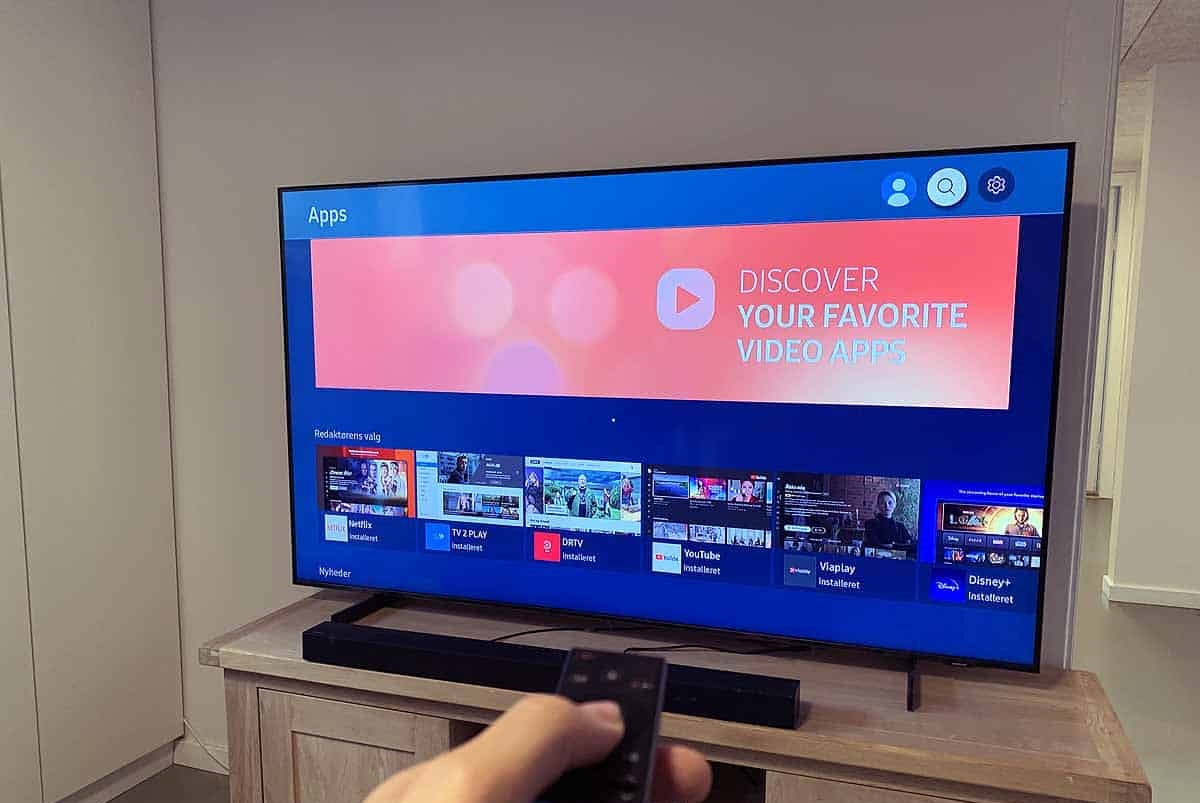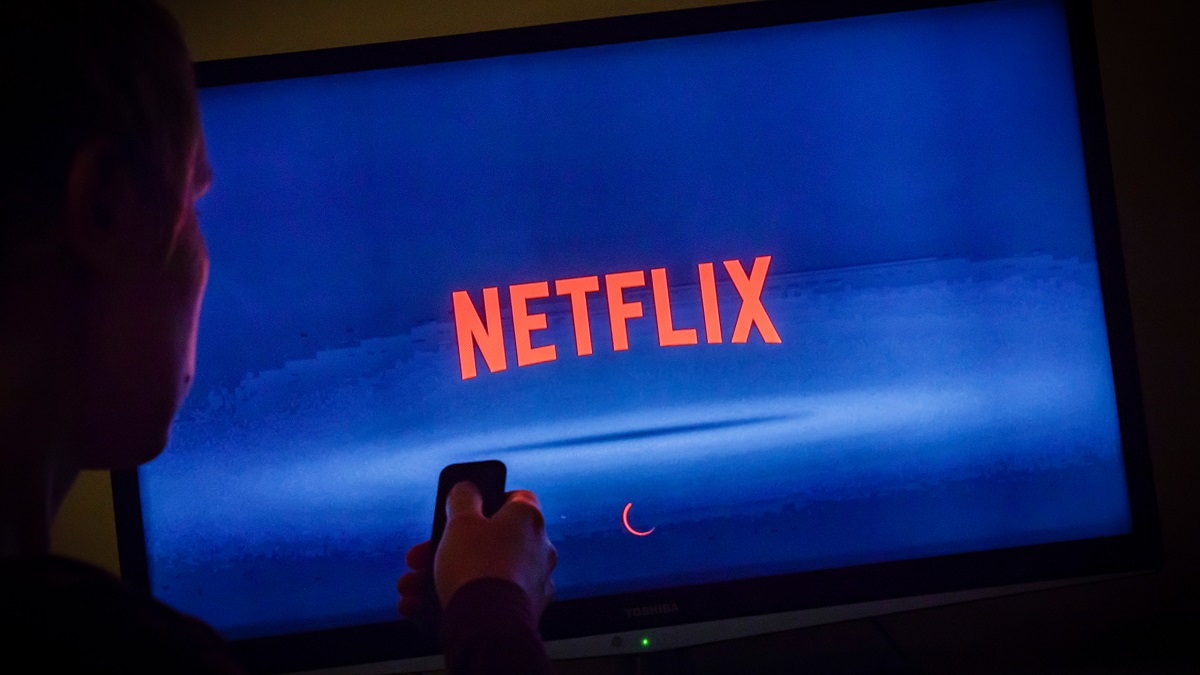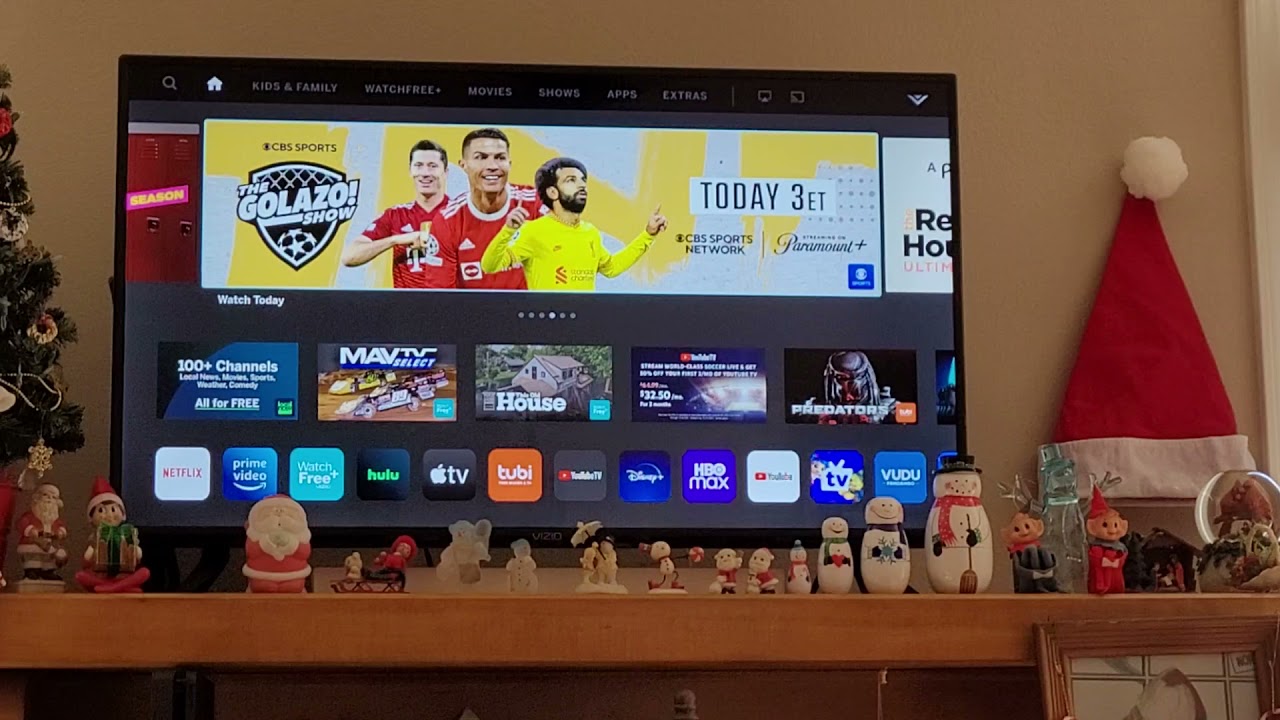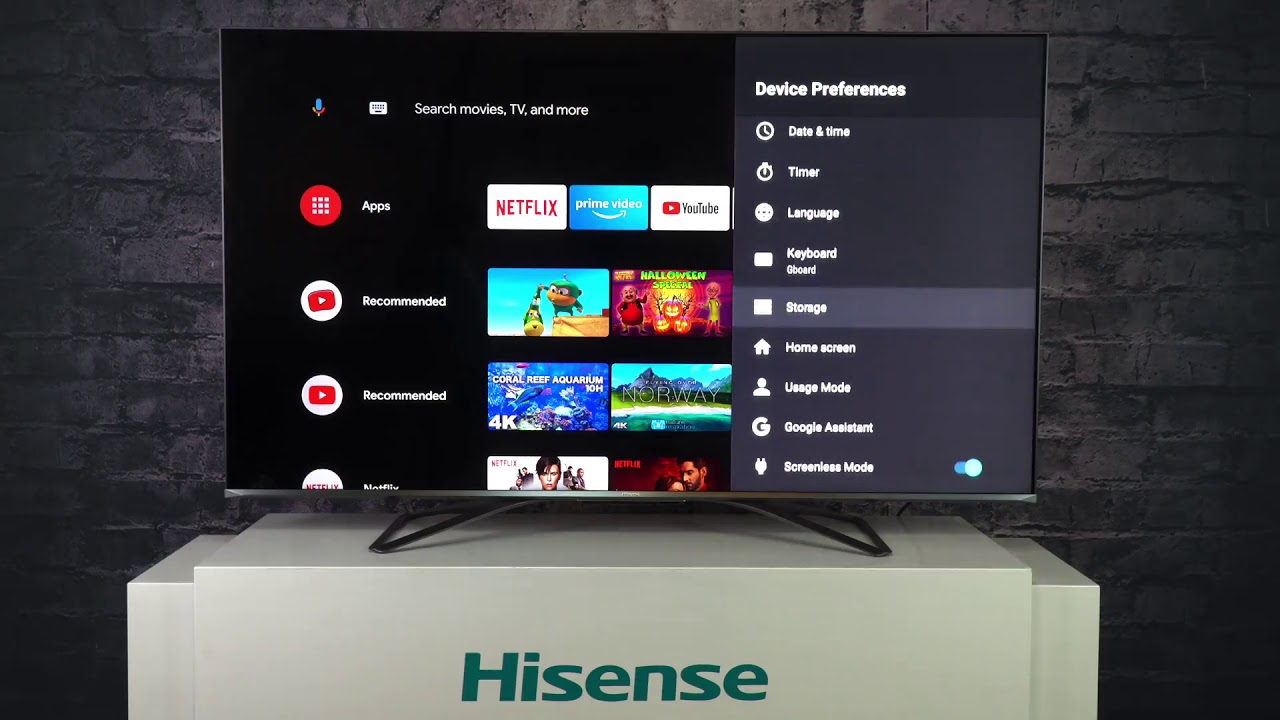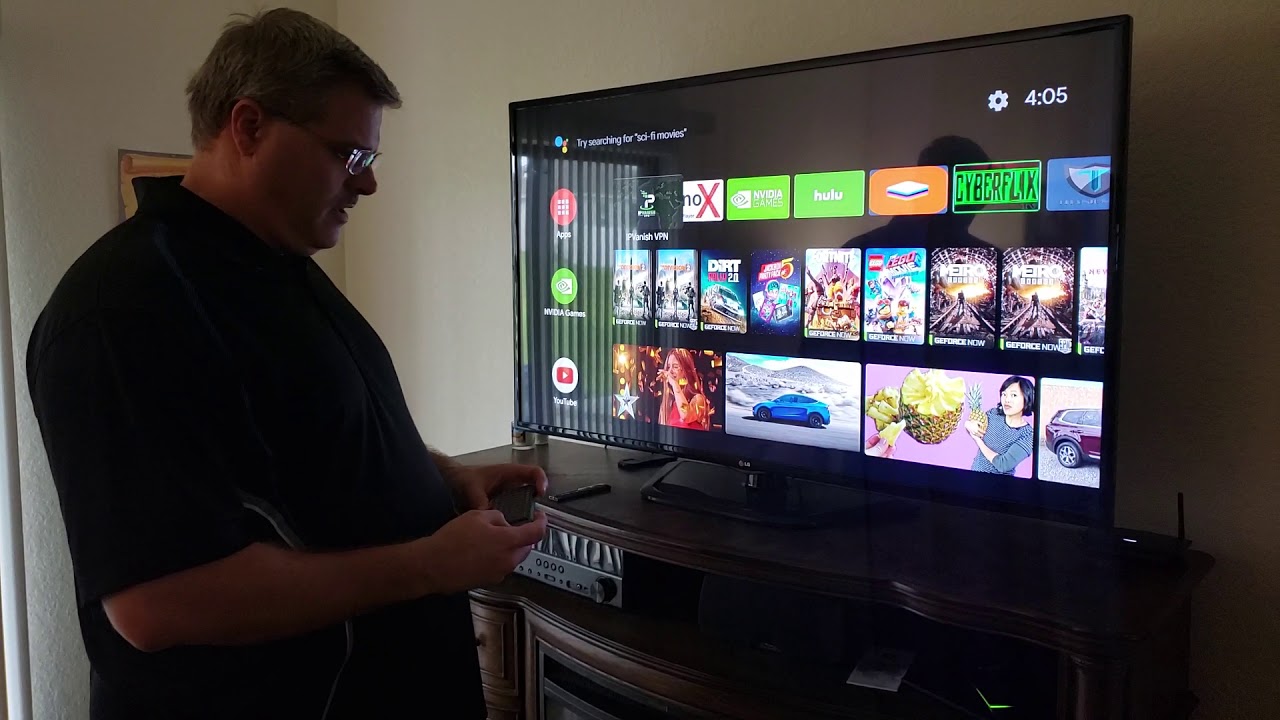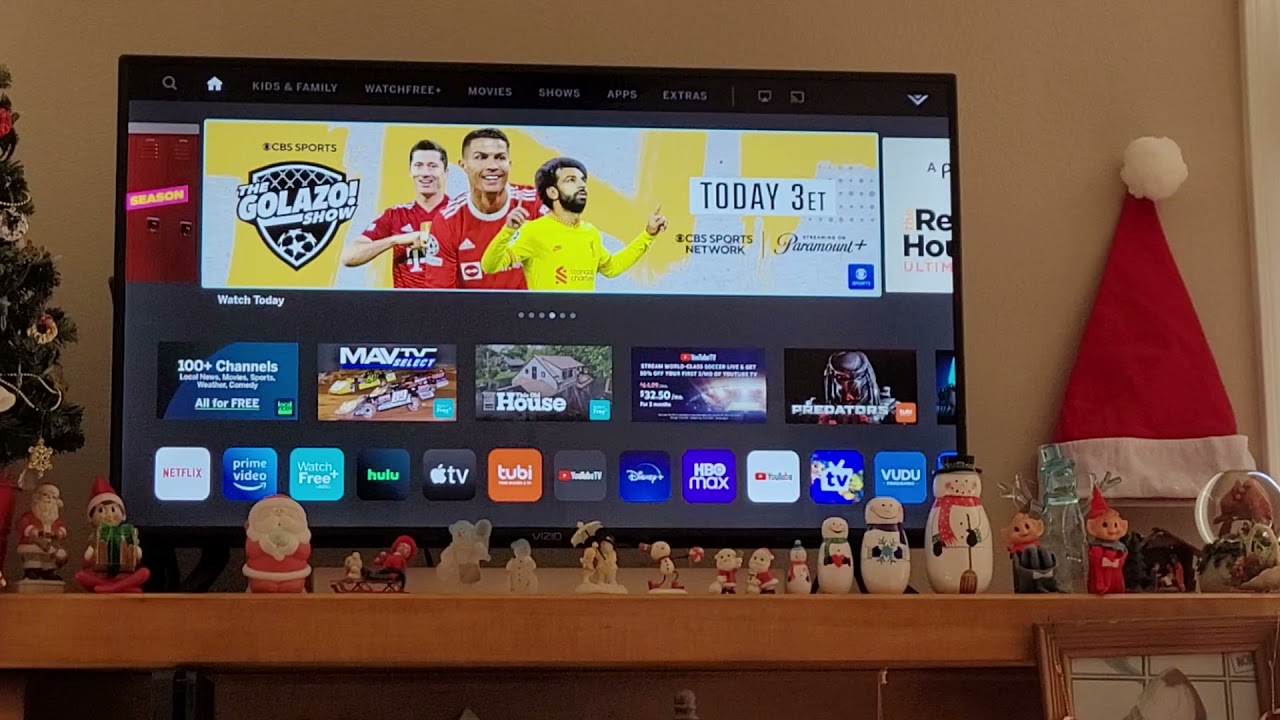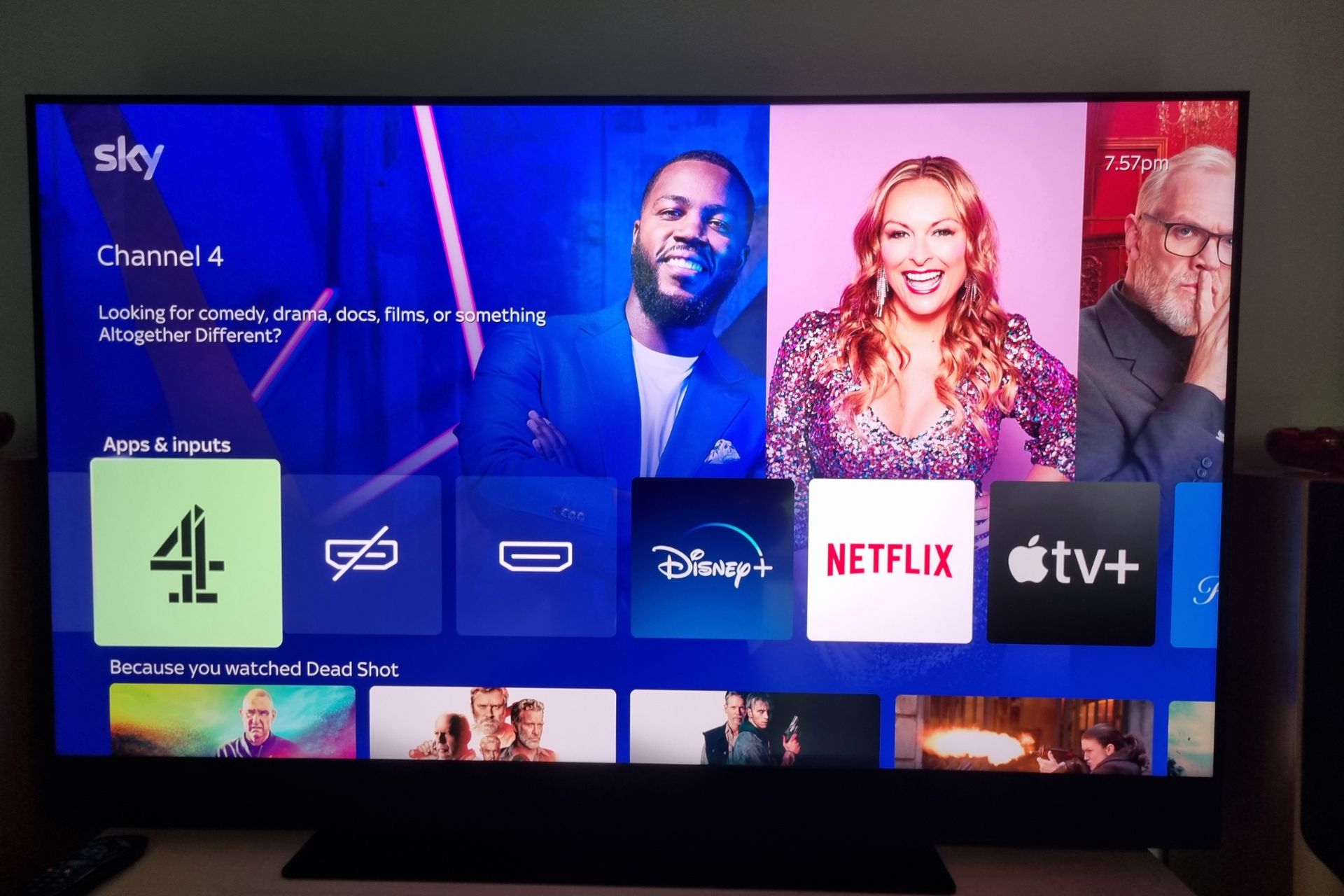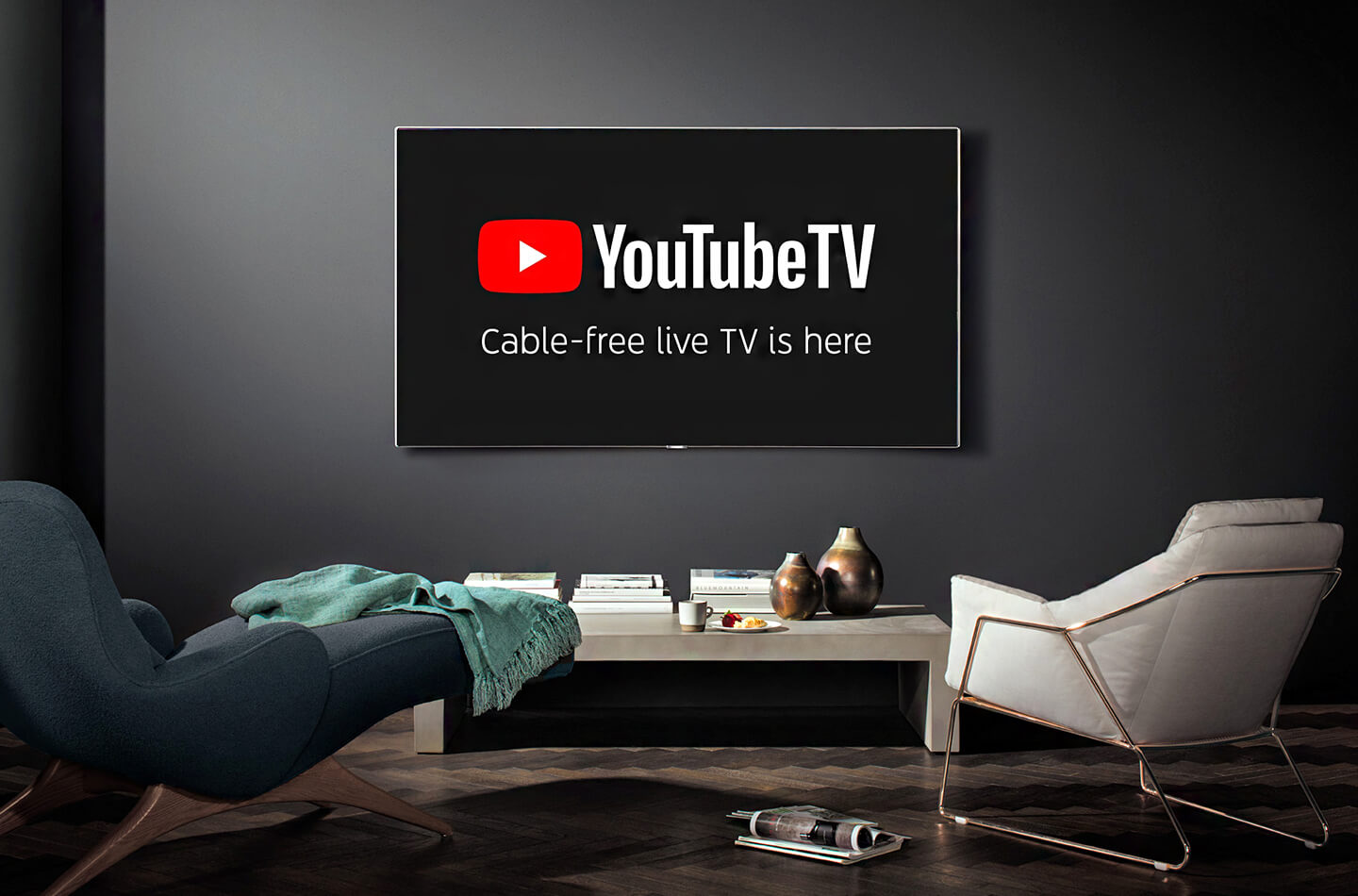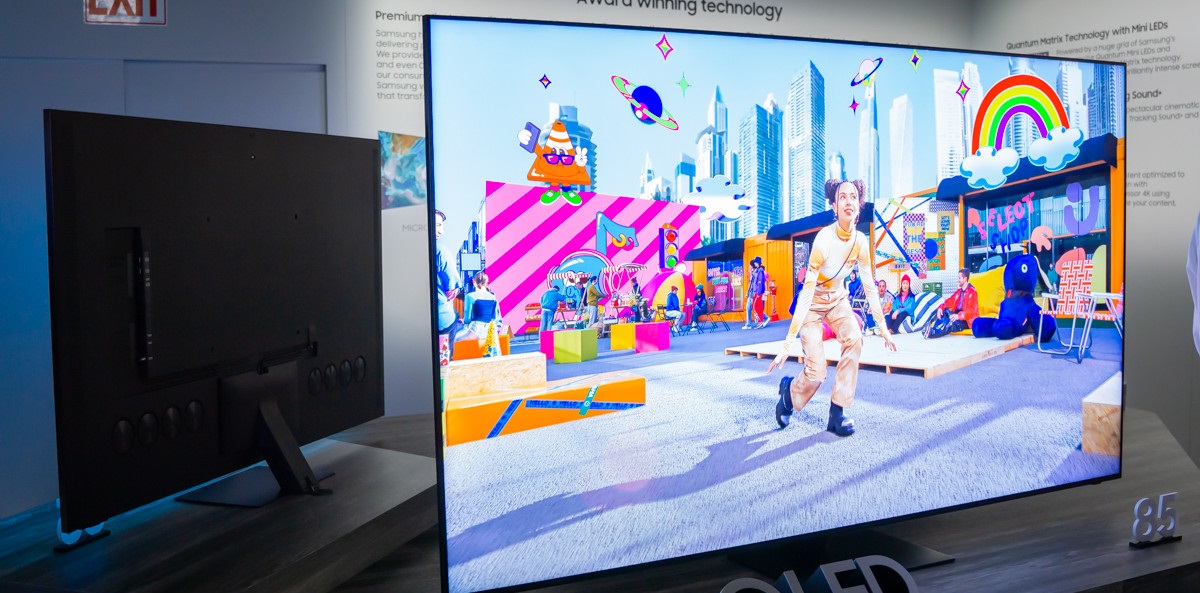Common Reasons Your Smart TV is Not Loading
Is your smart TV giving you a hard time and refusing to load? It can be frustrating, especially when you’re in the mood for some binge-watching or want to catch up on your favorite shows. Don’t worry, though, as there are several common reasons why your smart TV might be experiencing loading issues. Let’s take a look at some of the most frequent culprits:
- Internet Connection Issues: The first thing to check is your internet connection. Slow or unstable internet can interrupt the streaming process and cause your smart TV to struggle with loading content. Make sure your Wi-Fi is working properly and try restarting your router.
- App or Software Problems: Another common reason for loading issues is problems with specific apps or the smart TV’s software. Apps can occasionally glitch or become outdated, causing them to freeze or crash. Try closing and reopening the app, or consider updating the software to resolve the issue.
- Firmware Updates: Smart TVs receive periodic firmware updates to improve performance and add new features. It’s important to keep your TV’s firmware up-to-date. If you haven’t installed the latest update, this could contribute to loading problems. Check for available updates in the settings menu.
- DNS Settings: Incorrect DNS settings can also affect your smart TV’s loading capabilities. Consider switching to a different DNS server, such as Google DNS, to see if it improves the situation. Instructions on changing DNS settings can usually be found in the TV’s network settings.
- Clear Cache and Data: Over time, the cache and accumulated data can slow down your smart TV’s performance. Clearing the cache and data can help refresh the system and improve loading times. Instructions for clearing cache and data vary depending on the TV’s brand and model, so consult the user manual or manufacturer’s website for guidance.
Internet Connection Issues
One of the most common reasons why your smart TV may not be loading is due to internet connection issues. Your smart TV relies on a stable and fast internet connection to stream content seamlessly. If there are problems with your internet connection, it can result in buffering, freezing, or an inability to load content. Here are some possible causes and solutions:
- Weak Wi-Fi Signal: If your smart TV is located far away from your Wi-Fi router or there are multiple walls obstructing the signal, it may experience a weak connection. Try moving the router closer to your TV or consider using a Wi-Fi range extender to boost the signal strength.
- Interference: Other electronic devices in your home, such as cordless phones, baby monitors, or microwaves, can interfere with your Wi-Fi signal. Keep these devices away from your router or TV and try changing the Wi-Fi channel to minimize interference.
- Internet Speed: Insufficient internet speed can lead to buffering and loading issues. Check your internet plan to ensure it provides enough bandwidth for streaming. Contact your internet service provider to upgrade your plan if necessary.
- Network Congestion: If many devices are connected to your home network simultaneously, it can cause congestion and impact your smart TV’s performance. Consider limiting the number of active devices or using Quality of Service (QoS) settings on your router to prioritize streaming traffic.
- Router Issues: Sometimes, the router itself may be the problem. Restarting the router can often resolve temporary glitches. If the issue persists, try a factory reset or contact your internet service provider for assistance.
By addressing these internet connection issues, you can improve the loading speed and performance of your smart TV. Ensure a stable and fast connection to enjoy uninterrupted streaming and an optimal viewing experience.
App or Software Problems
If your smart TV is not loading, it could be due to problems with specific apps or the TV’s software. Apps can occasionally freeze, crash, or become outdated, causing loading issues. Here are some possible causes and solutions:
- App Glitches: Sometimes, apps can have glitches that prevent them from loading properly. Try closing the app and reopening it. If the problem persists, uninstall and reinstall the app to see if that resolves the issue.
- Outdated Apps: Apps need regular updates to ensure compatibility with new content and fix bugs. Check if there are any available updates for the malfunctioning app. Updating the app to its latest version can often resolve loading problems.
- TV Software Updates: Like apps, smart TVs receive periodic software updates to improve performance and add new features. It’s crucial to keep your TV’s software up to date. Check for available software updates in the TV’s settings menu and install them if necessary.
- Compatibility: Some apps may not be fully compatible with your smart TV model or operating system. Check the app’s official website or support page to ensure it is compatible with your TV. If not, consider using alternative apps that are optimized for your device.
- Factory Reset: If the app or software problems persist despite trying the above solutions, you may need to resort to a factory reset. This will restore your smart TV to its original settings and remove any software glitches. However, note that a factory reset will erase all your personalized settings and installed apps, so make sure to backup any important data beforehand.
By troubleshooting app and software-related issues, you can often resolve loading problems and get your smart TV back up and running smoothly.
Firmware Updates
One potential reason why your smart TV may not be loading properly is because it requires a firmware update. Firmware updates are important as they enhance the performance and stability of your TV, provide bug fixes, and introduce new features. Here are some important points to consider:
- Check for Updates: Go to the settings menu of your smart TV and look for the option to check for firmware updates. Depending on your TV brand and model, the location of this option may vary. Follow the prompts to check if there are any available updates.
- Install the Update: If there is a firmware update available, follow the on-screen instructions to install it. Typically, this process may take a few minutes as your TV downloads and installs the update. Avoid turning off the TV or interrupting the update process to prevent any potential issues.
- Automatic Updates: Most smart TVs have the option to enable automatic firmware updates. If this setting is enabled, your TV will automatically check for and install updates when connected to the internet. Make sure this option is turned on to ensure your TV stays up to date.
- Bug Fixes and Improvements: Firmware updates often address bugs and issues identified in previous versions. They also introduce performance improvements and new features, making your smart TV more reliable and user-friendly. It is recommended to keep your TV’s firmware updated to enjoy the best possible experience.
- Manufacturer’s Website: If you’re unable to find the firmware update option or encountering issues during the update process, check the manufacturer’s website for support. They may provide detailed instructions or even downloadable firmware files for manual installation.
Regularly checking for and installing firmware updates is crucial to ensure that your smart TV operates smoothly and efficiently. It’s an easy and effective way to address any loading issues and keep your TV up to date with the latest features and improvements.
DNS Settings
Incorrect DNS (Domain Name System) settings can also contribute to your smart TV’s loading issues. DNS is responsible for translating domain names into IP addresses. If your TV’s DNS settings are misconfigured or using a slow DNS server, it can result in slow or unreliable internet connection. Here’s what you need to know:
- Changing DNS Server: Consider switching to a different DNS server to improve your smart TV’s loading speed. One popular option is Google DNS, which provides a fast and reliable DNS resolution. To change the DNS settings, go to your TV’s network settings and look for the DNS configuration option. Enter the preferred DNS server addresses (such as 8.8.8.8 and 8.8.4.4 for Google DNS), and save the settings.
- DNS Proxy Services: Some smart TVs allow you to use DNS proxy services, which can help bypass region restrictions and improve streaming performance. These services route your DNS requests through their servers, optimizing the speed and reliability of your connection. Check if your TV supports DNS proxy services and follow the provided instructions for setup.
- Resetting DNS Settings: If you’ve made changes to the DNS settings and are encountering further issues, it may be beneficial to reset the DNS settings to the default values. This will revert the settings back to the original configuration. Consult your TV’s user manual or contact the manufacturer for guidance on how to reset DNS settings.
- Testing Different DNS Servers: If changing to Google DNS doesn’t alleviate the loading problems, you can try experimenting with other popular DNS servers like Cloudflare or OpenDNS to find the one that works best for you. Every network is different, so what works for one person may not work for another.
- Network Provider DNS: By default, your smart TV may be using the DNS server provided by your network provider. While this is typically reliable, it may not always offer the best performance. Consider using alternative DNS servers to see if it improves loading times and overall connectivity.
Optimizing your DNS settings can significantly enhance your smart TV’s loading speed and overall internet performance. Experiment with different DNS servers and configurations to find the one that provides the best results for your viewing needs.
Clear Cache and Data
If your smart TV is not loading properly or experiencing slow performance, clearing the cache and data can often help resolve the issue. Over time, the cache and accumulated data can clog up the system, causing lag and loading problems. Here’s how you can clear the cache and data on your smart TV:
- Apps: Start by clearing the cache and data of the specific apps that are giving you trouble. Go to the settings or applications menu on your smart TV and locate the list of installed apps. Select the app you want to clear the cache and data for, and choose the options to clear cache and clear data. Keep in mind that clearing data will reset the app to its default settings, so any preferences or login information will be erased.
- System Cache: In addition to app-specific caches, some smart TVs also have a system cache that stores temporary files. Clearing the system cache can help improve overall performance. To clear the system cache, access the settings menu on your TV, navigate to the storage or memory section, and look for an option to clear cache or temporary files. Follow the prompts to complete the process.
- Restarting: After clearing the cache and data, restart your smart TV. Restarting the device can help refresh the system and ensure that the changes take effect. Power off your TV, unplug it from the power source, wait for a few minutes, and then plug it back in and turn it on again.
- User Manual: If you’re unsure about how to clear cache and data on your specific smart TV model, refer to the user manual or visit the manufacturer’s support website for detailed instructions. Different TV brands and models may have slightly different procedures.
Clearing the cache and data on your smart TV can help improve loading times, enhance performance, and resolve any issues caused by accumulated temporary files. It’s a simple maintenance step that can go a long way in optimizing your viewing experience.
Resetting the Smart TV
If you’ve tried various troubleshooting steps and your smart TV is still not loading properly, resetting the device to its factory settings may help. Keep in mind that performing a factory reset will erase all your personalized settings, installed apps, and login information, so it’s essential to back up any important data before proceeding. Here’s how to reset your smart TV:
- Menu Option: Access the settings menu on your smart TV. Look for an option like “System,” “General,” or “Reset.” Within this menu, you should find an option to reset the TV to its factory defaults. Follow the on-screen prompts to initiate the reset process.
- Physical Buttons: In some cases, you may need to use the physical buttons on your smart TV to perform a factory reset. Refer to the user manual or check the manufacturer’s support website for instructions on how to access the reset functionality using the physical buttons. Typically, this involves pressing a combination of buttons or holding a specific button for a certain duration.
- Confirmation: Before proceeding with the factory reset, your TV may prompt you to confirm your decision. Be sure to read the on-screen instructions and understand that this action will erase all data and restore the TV to its original settings. Once you’re ready, confirm the reset to begin the process.
- Post-reset Setup: After the factory reset is complete, your smart TV will restart and prompt you to go through the initial setup again. Follow the on-screen instructions to connect to your Wi-Fi network, agree to the terms and conditions, and set up any necessary preferences.
- Reinstalling Apps: After the reset, you will need to reinstall any previously installed apps. Access the app store on your smart TV, search for the desired apps, and download them again.
Resetting your smart TV to its factory settings can help resolve persistent loading issues and software-related problems. However, since it wipes all data and settings, it should be considered as a last resort when other troubleshooting steps have failed to resolve the problem. If the issue persists after the reset, it may be necessary to contact the manufacturer’s customer support for further assistance.
Network Firewall or Router Settings
If your smart TV is not loading properly, it’s worth checking your network firewall or router settings. Firewalls and certain router configurations can sometimes interfere with the proper functioning of smart TVs and their ability to load content. Here are some steps to troubleshoot network firewall or router issues:
- Check Firewall Settings: If you have a firewall enabled on your home network, ensure that it is not blocking the necessary ports or protocols used by your smart TV. Refer to your firewall software or router’s user manual to learn how to adjust the settings and create exceptions for the smart TV.
- Disable VPN or Proxy: If you’re using a virtual private network (VPN) or proxy service on your network, try disabling it temporarily. VPNs and proxies can sometimes affect the smart TV’s ability to establish a proper connection with streaming services and cause loading issues.
- Quality of Service (QoS) Settings: Some routers have Quality of Service (QoS) settings that allow you to prioritize specific types of traffic over others. Ensure that the QoS settings are not interfering with the streaming traffic to your smart TV. If necessary, adjust the settings to give higher priority to streaming services or disable QoS temporarily to see if it resolves the loading issue.
- Restart Router: Try restarting your router to refresh its settings and clear any temporary glitches. Simply unplug the power cable from the router, wait for a few seconds, and then plug it back in. Allow the router to fully reboot and then check if the smart TV can load content properly.
- Contact Internet Service Provider: If you’ve checked the firewall settings, disabled VPN or proxy services, and restarted the router without success, it may be beneficial to contact your internet service provider (ISP). They can check if there are any network-level issues that might be affecting your smart TV’s loading performance.
By troubleshooting network firewall or router settings, you can ensure that your smart TV has a clear and unobstructed connection to the internet, improving its ability to load content smoothly. However, exercise caution when adjusting firewall or router settings and consult your ISP or router manufacturer’s support if you’re unsure about making changes.
Insufficient Memory or Storage Space
If your smart TV is running low on memory or storage space, it can hinder its ability to load content smoothly. Smart TVs rely on available memory and storage to run apps and process data efficiently. Here’s what you should consider when dealing with insufficient memory or storage:
- Check Storage Usage: Go to your smart TV’s settings menu and look for an option that displays the storage usage. This will show you how much storage space is currently in use and how much is available. If the available space is limited, it may be causing loading problems.
- Manage Installed Apps: Review the list of installed apps on your smart TV. Determine which apps you use frequently and those that you rarely or never use. Uninstall unnecessary or unused apps to free up storage space. This can be done through the settings or applications menu on your smart TV.
- Clear Cache and Data: As mentioned earlier, clearing the cache and data of apps can help optimize storage space. Access the settings or applications menu on your smart TV, select the app, and choose the options to clear cache and data. This will remove unnecessary files and free up storage space.
- External Storage: Some smart TVs support external storage options, such as USB flash drives or external hard drives. Consider connecting an external storage device to your smart TV and relocate apps or data to the external storage if supported. This can help alleviate storage limitations.
- Factory Reset: If managing apps and clearing cache does not provide sufficient relief in terms of storage space, you may need to resort to a factory reset. Keep in mind that a factory reset will erase all data and installed apps, so make sure to back up any important data beforehand.
By managing storage space effectively and ensuring sufficient memory capacity, you can improve your smart TV’s performance and enhance its ability to load content without any issues. Regularly reviewing installed apps and clearing cache can help maintain optimal storage usage.
Hardware or Internal Issues
If you’ve tried various troubleshooting steps and your smart TV is still not loading properly, there may be underlying hardware or internal issues. While these issues are less common, they can still impact the performance of your TV. Here are some potential hardware or internal factors to consider:
- Insufficient RAM: Smart TVs have a limited amount of RAM (Random Access Memory) available for running apps and processing data. If your TV has too little RAM, it may struggle to handle multiple apps or heavy streaming tasks, leading to slow loading. Unfortunately, upgrading RAM is not feasible for most smart TVs.
- Processor Overload: If your smart TV’s processor is overloaded with tasks or unable to handle the demands of streaming content, it can result in slow loading or freezing. Streaming high-quality content or running multiple apps simultaneously can strain the processor. Consider closing unnecessary apps or adjusting streaming quality to reduce the load on the processor.
- Age and Wear: Over time, the internal components of a smart TV can age and wear out, impacting its performance. This can lead to slower loading times and other operational issues. If your TV is significantly old and experiencing frequent loading problems, it may be time to consider upgrading to a newer model.
- Internal Software Glitches: Occasionally, internal software glitches can occur within the TV’s operating system, causing loading problems. These glitches may require a firmware update or even a factory reset to fix. Consult the manufacturer’s support documentation or contact their customer support for guidance on troubleshooting internal software glitches.
- Hardware Malfunction: In some cases, there may be a hardware malfunction within the smart TV itself. Issues with the internal hardware, such as faulty memory or a malfunctioning processor, can lead to persistent loading problems. If you suspect a hardware malfunction, it is recommended to contact the manufacturer’s customer support for further assistance or consider consulting a professional technician.
If you’ve exhausted all other troubleshooting options and continue to experience loading issues, it’s possible that there may be a hardware or internal issue with your smart TV. Contacting the manufacturer’s support or seeking professional assistance can help diagnose and address these underlying problems.
Contacting Customer Support
If all attempts to resolve the loading issues on your smart TV have been unsuccessful, it may be time to reach out to the customer support team of your smart TV manufacturer. Here are some important steps to take when contacting customer support:
- Gather Information: Before reaching out to customer support, gather all relevant information about your smart TV. This includes the brand, model number, firmware version, and any error messages or specific details about the loading issues you are experiencing. Providing this information upfront can help expedite the troubleshooting process.
- Check Warranty: Determine if your smart TV is still under warranty. Most manufacturers provide limited warranties that cover repairs or replacements for a certain period. Check the warranty terms and conditions to see if your issue qualifies for warranty support. If it does, follow the instructions provided to initiate a warranty claim.
- Online Support Tools: Many manufacturers offer online support resources such as knowledge bases, FAQs, and troubleshooting guides. These resources can often provide step-by-step instructions to resolve common issues. Search the manufacturer’s website for these resources and try to troubleshoot the loading problem using the provided information.
- Contact Options: Manufacturers typically provide multiple contact options for customer support, such as phone, email, or live chat. Choose the contact method that is most convenient for you. Phone or live chat options may offer more immediate assistance, while email allows you to provide detailed information and screenshots if necessary.
- Describe the Issue: When contacting customer support, clearly describe the loading issues you are facing. Be specific about the error messages, frequency of occurrences, and any troubleshooting steps you have already attempted. Providing this information will help the support team understand the problem better and provide more accurate assistance.
- Follow Instructions: The customer support team will guide you through the troubleshooting process. Follow their instructions carefully and provide any additional information or feedback they may require. It may be necessary to perform certain actions or provide diagnostics to help identify and resolve the loading problem.
Contacting customer support is often the best option when all attempts at self-resolution have been exhausted. The support team has in-depth knowledge of their products and can provide specific guidance tailored to your smart TV model and loading issues. Remember to remain patient and polite throughout the interaction to ensure a smooth and productive support experience.







